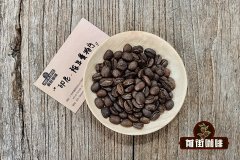Why is the selection of coffee graded? What are the ways to grade coffee?
Select coffee is usually the top coffee; but what does the top coffee represent? Who is in charge of grading? How should it be graded?
Although grade is not the only criterion for identifying flavor, it is still a fairly objective indicator.
Why is coffee graded?
There are different ways to manage the origin of coffee; some are composed of large and small farmers, and some are dominated by expert enterprises.
Even the coffee in the same place has different quality and flavor, so in order to mark the grade standard of coffee quality and the convenience of transaction, "coffee grading" has become an important index. in particular, selected coffee pays special attention to flavor and quality, and product grading is an indispensable process.
Grading is an important indicator rather than the only one.
There are thousands of substances in coffee beans; and everyone's preferences and feelings are different, grading can not 100% show the flavor of coffee, consumers want to find good coffee, testing is still the best way, in other words, grading is not the only indicator.
The method of ◎ grading
Coffee beans are handled differently in different countries; as a result, there are a variety of grading methods, and there is currently no unified method in the world, but generally speaking, a producing country can only use one method.
1. Grade Bean Size according to the size of coffee beans.
Some people say that the size of coffee beans does not affect the flavor of coffee; for example, the granules of Magnolia Mattari beans in Yemen are large and small.
But it is one of the top grades of coffee.
However, in many areas where coffee beans are produced, the size of coffee beans is indeed an indicator of reference value.
In those areas, beans grow big, full and curvy, indicating the robust growth of coffee, reaching a state of full maturity, and showing the best flavor.
In addition, beans of the same maturity; that means they have the same hardness and moisture content, easy to achieve uniform baking, can produce a consistent flavor, and become high-quality coffee, so most new farms use this classification method.
This classification method is based on a variety of perforated screens, and the screens will have various specifications, which are identified by numbers, and the meshes are associated with numbers.
The size of the mesh 1 stroke 64 inches is the unit of calculation; if the diameter of the mesh is 18 stroke 64 inches, the number of the screen is 18.
If the diameter of the mesh is 17 stroke 64 inches, it means that the number of the screen is 17, and so on.
There are 19, 16, 15, 14 and other numbered screens. All the coffee selections are dominated by beans above 18gam64, which means that the more mature they are.
The screening process is to put the coffee beans on the Internet; after shaking them back and forth by machine or manual work, the beans smaller than the mesh will fall and be removed, while the removed beans will be screened through a smaller sieve. After such layers of screening, the grade of coffee beans will be compiled.
After classification, it will be divided into AA, A, B, C and PB levels.
AA is the highest, and A, B and C decrease successively. Below C level, it is usually used as feed or fertilizer.
In addition, "round beans" Pea-Berry has a special flavor, and beans are already relatively small, so they have their own grade, that is, "PB" is usually more expensive.
In addition, you can see X, Y1, Y2 and T grades; these coffee beans vary in size and have a lot of defective beans, which is quite bad and not worth trying.
Areas where this classification is generally used; there are New Guinea, Zimbabwe, Kenya, Tanzania, Puerto Rico, Uganda, etc.
Only AA grade or above can qualify for selection of coffee.
In addition, many Brazilian coffee also use this classification, only directly labeled 19, 18, 17, rather than AA, A, B, C classification.
2. Grading according to the number of points of defective bean Imperfection
This is the earliest method of classification; it is still used in many parts of Brazil today.
The method of identification is to randomly take a sample of about 300 grams; put it on black paper, because the black paper is more reflective, and then carefully examined by a professional appraiser; identify the defective beans in the sample and accumulate different scores according to the type of defective beans.
For example:
Black beans 1, small pebbles 1, big pebbles 5, broken beans 5, pest beans 5, large dried peels 1, medium dried peels 2, small dried peels 1, shell beans 3, unshelled beans 1, sour beans 2, etc.
After the identification is completed, it is rated as NY2~NY8 according to the accumulated defect score, and similarly, only the highest grade is eligible for inclusion in the selection of coffee. But there is no NY1.
The reason is that Indonesia also uses this classification method.
Therefore, the method of identification is roughly the same as the calculation of the score of the defect, but the way of grading is different.
Indonesian beans are mainly divided into six grades, that is, Gr1~ Gr6, while in Ethiopia, the highest grade is Gr2.

Important Notice :
前街咖啡 FrontStreet Coffee has moved to new addredd:
FrontStreet Coffee Address: 315,Donghua East Road,GuangZhou
Tel:020 38364473
- Prev

Characteristics of Papua New Guinea Coffee Coffee flavour of Chateau Coffee taste how to make a good Blue Mountain
Papua New Guinea, also known as Papua Newquilla, is an island country in the southwestern Pacific Ocean, covering mainly the eastern half of New Guinea and Indonesia (Indonesia) to the west. Papua New Guinea has a population of about 8 million. English is the main language, and there are about 850 different languages.
- Next

What on earth is old coffee? Where did the old coffee come from? Flavor characteristics of aged Coffee
What is ◎ aged Coffee? you may have heard of coffee with raw beans left untouched for a long time; it will become old coffee and taste better. As a matter of fact, such a statement is wrong and quite irresponsible. Beans will rot if they are kept for too long; they will change from fresh cyan to white, then to yellow, and the flavor will become dull and even worms will grow out. By such as
Related
- Beginners will see the "Coffee pull flower" guide!
- What is the difference between ice blog purified milk and ordinary milk coffee?
- Why is the Philippines the largest producer of crops in Liberia?
- For coffee extraction, should the fine powder be retained?
- How does extracted espresso fill pressed powder? How much strength does it take to press the powder?
- How to make jasmine cold extract coffee? Is the jasmine + latte good?
- Will this little toy really make the coffee taste better? How does Lily Drip affect coffee extraction?
- Will the action of slapping the filter cup also affect coffee extraction?
- What's the difference between powder-to-water ratio and powder-to-liquid ratio?
- What is the Ethiopian local species? What does it have to do with Heirloom native species?

